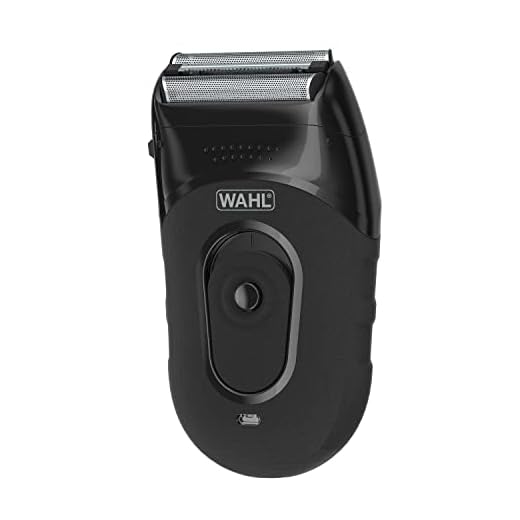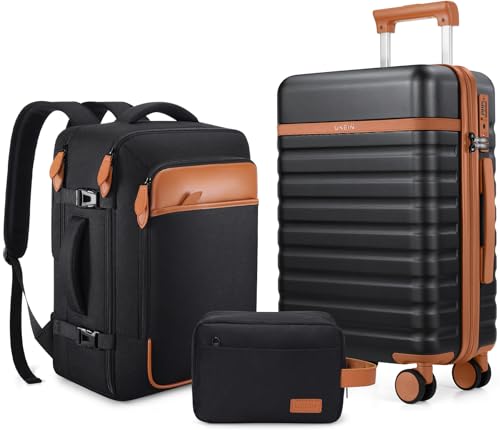

Immediate guidance: Cartridge-style shavers and single-piece disposable shavers are allowed in cabin baggage under UK aviation security rules; electric shavers are permitted as well. Safety shavers that accept removable metal blades are prohibited from cabin screening – all loose or spare metal blades must be transported inside checked baggage in a secure container.
Packing recommendations: Store spare blades in original packaging, a dedicated blade bank or a taped, rigid container within checked baggage. If a safety shaver handle is required onboard, remove the blade and carry the handle only in cabin baggage. Label and cushion blade containers to avoid accidental cuts during handling and inspection.
Practical notes: Airport security officers hold final discretion and prohibited items may be seized at checkpoints. Departure-country regulations and destination rules may differ; verify the UK flag carrier’s policy and the departure airport security pages before travel. For international itineraries, follow the strictest applicable rule and present questionable items at check-in to avoid surprises.
Carry-on rules for bladed shaving tools on UK flag carrier flights
Recommendation: store disposable cartridge shavers and electric shavers in cabin baggage; keep loose single- or double-edge replacement blades secured in checked baggage or inside a factory-sealed blade container.
Specific prohibitions and permissions
Permitted in cabin: disposable cartridge units with fixed blades, foil and rotary electric shavers, and grooming kits with non-removable blade cartridges. Prohibited in cabin: loose safety blades, injector-style spares and blade banks containing spare blades–these items belong in checked baggage.
Battery and device rules
Lithium-ion limits: cells or packs up to 100 Wh allowed in cabin without carrier approval; 100–160 Wh require airline approval and are usually restricted to one spare per passenger. Spare lithium batteries must remain in cabin with terminals insulated (tape or original packaging). Installed batteries in electric shavers may be packed in checked baggage if manufacturer guidance permits; spare batteries should not be placed in checked baggage.
Security screening: present grooming items where officers can inspect them; prohibited items will be confiscated. For itineraries with transfers follow the strictest rule among departure, transfer and arrival airports. When uncertain consult the airline’s prohibited-items page or the Civil Aviation Authority guidance before travel.
Disposable cartridge and single‑use shaving devices in cabin baggage: permitted?
Disposable cartridge shavers and cartridge‑style single‑use shaving units are permitted in cabin baggage when the blade is enclosed in a fixed cartridge; keep the cartridge attached and any protective cap in place.
Items normally allowed in the cabin
Cartridge shavers (multi‑blade heads with non‑removable cartridges) – permitted assembled and carried in carry‑on bags.
Disposable one‑piece shavers (entire unit discarded after use) – permitted if the blade is integral to the plastic head and not removable.
Electric shavers and trimmers – permitted; batteries must comply with airline battery rules.
Items that must be stowed in checked baggage
Safety razors with removable blades (including double‑edged blades) and loose blades – prohibited in cabin; place in checked baggage or blade dispensers designed for transport.
Straight razors and any blade intended to be removed, replaced or exposed – must travel in hold baggage.
Packing recommendations: keep cartridge units assembled and in original or clearly protective packaging, store loose replacement blades in checked baggage, and present cartridge/electric shavers in the top layer of cabin bags for quick inspection. When transiting through multiple countries, follow the most restrictive checkpoint rules; if uncertain, move the item to checked baggage to avoid confiscation.
Safety (double‑edged) shaving blades: carriage in cabin baggage
Recommendation: All double‑edged shaving blades and loose spare blades must be packed in checked baggage; storage inside cabin bags is not permitted by UK airport security and by most airlines.
Regulatory position: The UK Civil Aviation Authority and many European authorities prohibit loose blades and double‑edged blades in carry‑on. The US Transportation Security Administration similarly disallows spare single or double blades in carry‑on; if discovered at security, blades are normally seized and the screening process may cause delays.
Packing and protection: Place blades in original blister packs, purpose‑made blade banks, or a small hard metal tin. Secure each blade bank with tape or a cable tie so that no edge is exposed. Enclose the blade container inside the main checked case or within a robust travel bag (example: best travel portable duffel bag) to prevent shifting and reduce risk of injury to baggage handlers.
Quantity and presentation: No formal numeric quota applies for checked items in most jurisdictions, but keep spares grouped and in original packaging where feasible. Loose, uncontained blades increase risk of confiscation and of injury during baggage handling; avoid loose placement.
Used blades and disposal: Use a dedicated disposal canister or fold-and-seal packet before packing. Do not wrap used blades in paper only; use a rigid inner container.
| Item | Carry‑on (cabin) | Checked (hold) | Packing note |
|---|---|---|---|
| Loose double‑edged blades | Not allowed | Allowed | Original blister or blade bank, taped, inside main suitcase |
| Double‑edged shaving device with blade installed | Generally not allowed | Allowed | Remove blade if uncertain; otherwise pack in hard case in checked baggage |
| Empty double‑edged shaving handles (no blade) | Allowed | Allowed | Store separately from blade containers |
| Straight (cut‑throat) blades and open edges | Not allowed | Allowed | Sheathed and secured inside checked case |
Insurance and loss: For policy questions about confiscation or baggage loss related to prohibited blades consult travel insurance resources such as best umbrella insurance forum.
Electric shavers and battery trimmers: carry‑on rules and packing advice
Store electric shavers and battery trimmers in cabin baggage; spare batteries are only permitted in cabin and must not be stowed in checked baggage.
- Lithium‑ion batteries: up to 100 Wh per cell allowed without approval. Batteries between 100 Wh and 160 Wh require carrier approval and are normally limited to two per passenger. Batteries over 160 Wh are prohibited from both cabin and checked compartments.
- Lithium‑metal batteries: up to 2 g of lithium content permitted in cabin only; anything above 2 g requires prior approval from the carrier.
- Power banks and portable chargers classify as spare lithium‑ion batteries and follow the same Wh rules; they must remain in cabin baggage and have terminals protected.
Packing and operational safeguards:
- For devices with removable batteries: remove the battery and protect terminals with non-conductive tape or keep them in original packaging or individual battery pouches.
- For devices with built-in (non‑removable) cells: leave the battery installed, switch the device off and secure any power buttons to prevent accidental activation (use a lock if available or a small piece of tape over the switch).
- Cover cutting heads with the manufacturer’s cap or a dedicated guard; wrap trimmers with exposed metal parts in a soft cloth or place inside a hard case to avoid damage during screening.
- Place spare batteries in carry compartments separate from loose metallic items to speed up X‑ray screening and reduce short‑circuit risk.
- Report swollen, damaged or leaking batteries to airline personnel and surrender if requested by security staff.
Liquid and cream products used with electric shavers or trimmers:
- Foams, gels and aftershaves follow the standard cabin liquids rule: individual containers ≤100 ml and all containers stored in a single transparent resealable bag (typically up to 1 litre capacity).
- Large aerosol cans or refill cartridges for electric shavers are usually prohibited in cabin when capacity exceeds permitted limits; pack oversize items in checked baggage if allowed by the carrier.
Screening and documentation:
- Present devices and loose spare batteries separately at security screening if requested.
- Keep battery capacity labels visible (Wh or mAh/Volts) to assist security officers; if only mAh is shown, calculate Wh = (mAh × V)/1000.
- If a spare battery exceeds 100 Wh and prior approval has been granted, carry written confirmation from the carrier when possible.
Packing checklist for travellers:
- Shaver/trimmer in protective case; power switch secured.
- Installed batteries left in device; removable cells stored individually with taped terminals.
- Spare batteries and power banks in cabin compartment only.
- All liquids ≤100 ml inside a single transparent bag.
- Battery labels accessible; carrier approval documentation (if required) to hand.
Related reading: best aquarium in canada
What to expect at airport security: presenting shaving items and common reasons for confiscation
Place all shaving items in a single, easily accessible toiletry bag or clear container and put it into the X‑ray tray for screening.
- Standard screening sequence: X‑ray scan → visual inspection → possible pat‑down or swab test if an item triggers an alarm.
- Officers may request opening of sealed boxes, removal of protective caps, or transfer of small parts into a transparent bag for clearer imaging.
- Electric devices are usually left in carry items but may be powered on on request; removable batteries with exposed terminals may require taping or separate presentation.
- Trays and bins: place toiletry bag and any metal grooming cases in a separate tray rather than packed deep inside a carry‑on roll‑case to speed inspection.
Most frequent causes for seizure
- Exposed loose blades: individual single or double edged blades found loose in pockets, toiletry kits, pill bottles or loose packaging are routinely held.
- Damaged or missing protective guards: manual shaving tools whose safety covers are broken or absent will be treated as a security risk.
- Improvised items or modifications: blades attached to non‑standard handles, homemade assemblies or items altered to function as a weapon are confiscated.
- Unlabeled or oversized liquids/creams: shaving gels, creams or aftershaves over 100 ml appearing in cabin bags without compliance with liquid‑container rules are removed.
- Battery concerns: loose lithium batteries, damaged cells, or devices with exposed terminals that cannot be made safe during screening may be retained.
- Suspicious packaging: opaque wrappings concealing metallic items or dense taped bundles that prevent clear X‑ray interpretation will prompt manual inspection and possible seizure.
Onsite outcomes and traveller options
- Immediate confiscation and disposal is the usual outcome for prohibited items; retrieval after screening rarely available.
- When time allows, transfer to checked baggage is occasionally offered at airline check‑in or a dedicated counter before security; this requires leaving the security area.
- Some airports provide sealed postal or surrender services where permitted; availability is location dependent, so ask the screening officer.
Simple steps to reduce risk of loss
- Keep all blades in original sealed retail packaging or in a purpose‑made metal blade bank.
- Fit protective caps and secure moving parts; tape exposed battery terminals if spare cells are carried.
- Place all grooming items on top of carry‑on contents for quick access and avoid hiding small metal parts inside clothing or electronics.
- If unsure about an item’s status, place it in checked baggage before arriving at the terminal.
Packing shaving blades in checked baggage: safest methods to store blades and prevent injury
Store all loose blades inside a rigid, lockable blade bank or original sealed dispenser and place that container in the suitcase core, surrounded by clothing layers to absorb impact.
Recommended containers
Use one of the following: a purpose-built metal blade bank (stainless steel, snap or screw lid, designed for disposable double-edged blades), a hard plastic cartridge case for multi‑blade cartridges, or the original manufacturer dispenser. If none available, use a small metal tin (e.g., mint tin) lined with foam and taped shut. Avoid soft pouches or loose plastic bags as primary containment.
Packing placement and injury prevention
Position the sealed container away from zippers and suitcase edges – centrally between folded garments or inside a shoe to prevent shifting. Fill surrounding voids with socks or underwear and secure with internal compression straps. Add a silica gel packet to reduce corrosion and enclose the container in a zip-seal bag to contain any lubricants. For improvised protection, wrap individual blades in two layers of corrugated cardboard, tape all edges, then place together inside the metal tin. Never leave blades loose in external pockets or side compartments.








